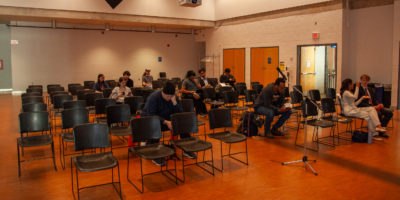By Anna Maria Moubayed
The campaigning period for Ryerson’s Board of Governors’ (BoG) student representative elections started Feb. 12, with voting expected to take place March 1-4.
This year, there are 15 candidates running for the three BoG student representative positions available.
“I am so excited to see so many students running. The BoG is a committee that so often gets overlooked and to see students interested and engaged with the governance system at Ryerson is very exciting,” said MJ Wright, one of the BoG student representatives for the 2020-21 academic year.
Before students cast their ballots on Monday, The Eyeopener breaks down what the BoG actually does to ensure voters are well-informed.
Ryerson has a bi-cameral governance structure, meaning its governmental body is made up of two separate structures—the BoG and the Senate.
The 24 members of the BoG include university president Mohamed Lachemi, chancellor Janice Fukakusa, 11 external members and 11 elected members. The external members include those appointed by the provincial government and the board, most of which sit on the board for three-year terms. The elected members include staff, faculty, students and alumni from Ryerson.
The BoG is the committee that oversees all major financial decisions at the university. While the Senate works strictly in academic matters, the board takes care of the yearly budget, building plans and investments, according to Wright.
Three elected student representatives attend committee meetings to learn about and vote on the current and ongoing matters within the university.
“As part of the role, the representative has the possibility of creating changes to the university they see as necessary during their term,” said Tay Rubman, another student representative on the BoG for this academic year.
“The representative’s job is broad, so it depends entirely on the representative with what they do with it, and they can be as creative as they want to be with it as long as it is within the board’s jurisdiction,” he said.
As previously reported by The Eye, Wright, for example, worked to divest Ryerson from fossil fuels and companies that enable fossil fuels through his role on the BoG. He hopes his divestment efforts at Ryerson will promote climate action and spread awareness about the university’s investments.
According to an article on RU Student Life written by this year’s BoG student representatives, only 3.3 per cent of eligible students voted in the BoG elections during the previous year, which has been a consistent number over several years.
The article goes on to explain that it can be difficult for students to stay informed about their institution’s government and its proceedings because they don’t have time to read through meeting highlights, especially given how inaccessibly these documents are written.
According to Wright, this year’s student representatives have tried to engage the Ryerson community in BoG-related issues by hosting monthly town halls and collaborating with student affairs to support students’ financial needs.
“We want more engagement and I’m always happy to see students, faculty, staff and alumni engage in [the election] process,” said Lachemi.
Lachemi told The Eye that he encourages students to vote and engage in the BoG elections to ensure a successful voting process.
“The BoG members have the responsibility of ensuring that Ryerson continues to be a great centre of advancement, applied knowledge and research, which ultimately addresses the needs of our society,” said Lachemi.
A debate with all 15 candidates moderated by The Eye will be held on Feb. 25 at 4 p.m. Attendees are asked to register ahead of the debate.










Leave a Reply